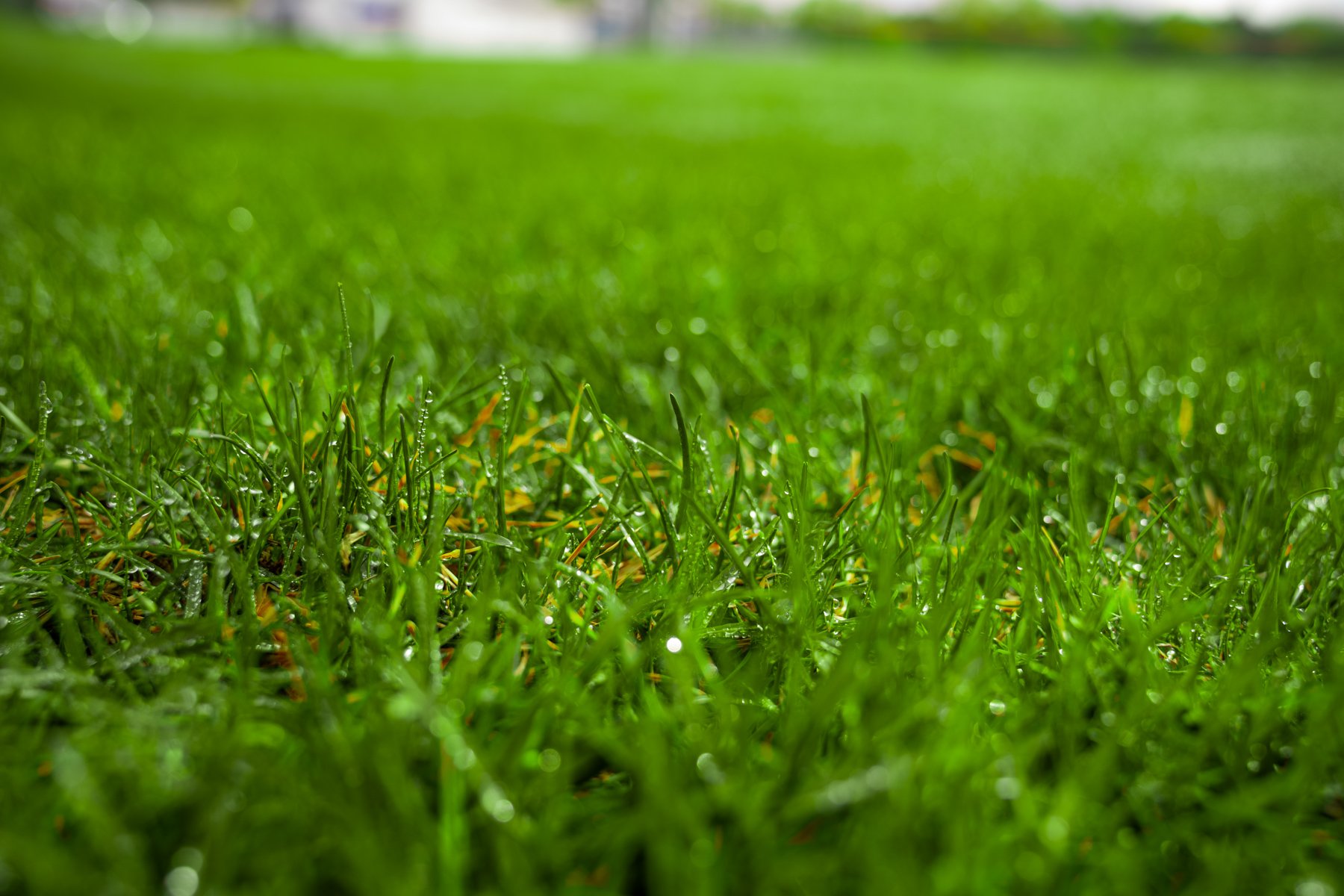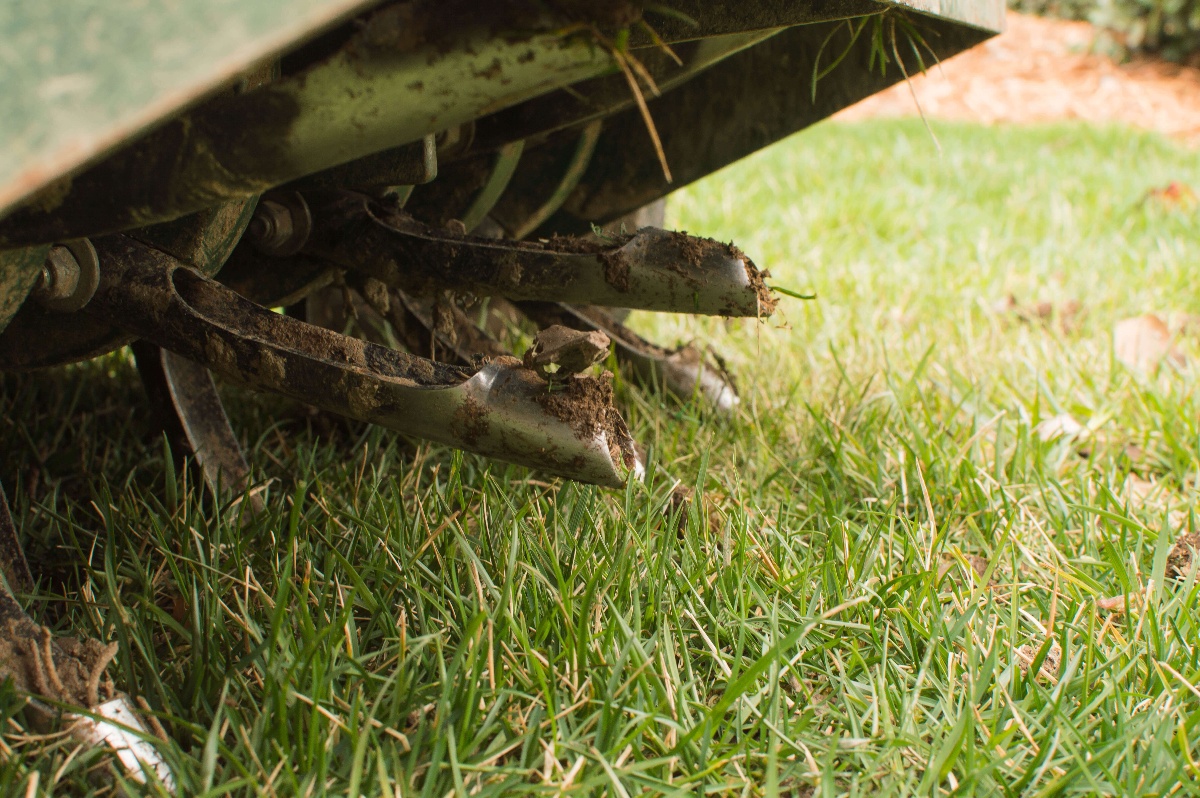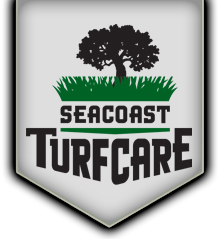
How to Care for Your Lawn After Aeration and Overseeding
How you care for your lawn after aeration and overseeding is going to have a direct impact on your results. One of the most important tasks you’ll do after aerating and overseeding is setting up a new seed watering schedule that will help your grass succeed.
Your new grass seed will require water in order to germinate and you want to make sure this is done properly.
You’ll also want to follow other guidelines, including proper mowing and adjusting other lawn care tasks.
Lawn aeration and overseeding are two of the best things that you can do for your New England lawn, but you want to make sure you’re getting maximum value out of this service. In this article, we’ll talk about what to do after aerating your lawn to set yourself up for success.
Jump to:
Should You Water After Aerating?
How Much to Water After Overseeding?
How Often to Water After Overseeding?
What About Mowing After Aeration?
Additional Aeration & Overseeding Follow Up Care
Working With Professional Lawn Care in Southern NH, Northeastern Massachusetts, and Southern Maine
Should You Water After Aerating?
Yes, you should water your lawn after aerating, especially if you also had overseeding performed. Overseeding after aeration is a common practice and regular water is necessary for the seed to germinate. Seeds that are not watered can dry out and ultimately fail.
Performing overseeding after aeration is highly recommended because the aeration process provides the best conditions for your new grass seed, including the “seed-to-soil” contact that is necessary for growth.
Aeration helps to break up soil compaction and also allows the seeds to fall into the holes that are made. This is important so that your seed isn’t left sitting atop the soil to become expensive birdseed or get lost to the wind.jpg?width=1200&height=900&name=aeration%20holes%20plugs%20and%20seed%201%20(1).jpg)
How Much to Water After Overseeding?
The goal for watering after this service should be to keep the soil moist - but you want to be careful not to wash out the seed with too much water. Your lawn will ultimately need less water, but will require a higher frequency of watering.
Typically, watering about two or three times a day for approximately 20 minutes will keep the soil moist. Simply by looking at your lawn, you should have a good sense of whether you’re achieving moist conditions.
You can achieve this by hand-watering with a hose, but a sprinkler helps simplify things. Even better, a programmed irrigation system removes all of the guesswork. No matter how you make it happen, you do want to make sure you’re putting down water consistently. Failing to do so could mean that your grass seed doesn’t germinate.
Obviously, any rainfall will reduce the need to water yourself and it’s not uncommon to overestimate how much it rains. Keeping an eye on your lawn after aeration and overseeding is important so that you can add supplemental watering as the conditions change.
How Often to Water After Overseeding?
As we mentioned, watering about two or three times a day is often best. We know that most people work outside of the home, so setting a reminder for morning and afternoon waterings can work best.
Following germination, you can begin to water less frequently. Germination usually takes between 10 and 14 days.
After germination, you’ll start using more water, the opposite of what you were doing before. The goal after germination is to provide the soil with a good soaking so that water is reaching a few inches beneath the surface to where the roots are growing. This might mean continuing to water once or twice a day for longer periods of time.
What About Mowing After Aeration?
It will also be important to hold off on mowing after aeration and overseeding. That’s because mowing can put stress on the lawn and you want to give it some time to acclimate. Mowing can also prevent seeds from falling into the holes that were created (or might jostle them out).
Ideally, you want to wait around two weeks to begin mowing your lawn again.
We know people are often eager to mow as the established grass is growing, but you want to give that new grass some time. Mowing as close as possible prior to your lawn aeration service will help give your new grass seed as long as possible settle undisturbed.
When you do start mowing, be sure to follow proper mowing height recommendations. We recommend mowing to around 3 to 4 inches. The key is not to mow too short as this puts stress on the grass.
Remember: always mow with a sharp blade to ensure a clean cut!
Additional Aeration & Overseeding Follow Up Care
Minimize Foot Traffic
Aside from proper watering and mowing, we also recommend minimizing foot traffic as much as possible. Obviously, you might not be able to avoid walking on your lawn (or sending pets out). If you can make an effort to minimize activity on the lawn as much as possible, it gives that new seed more of an opportunity to grow without being disturbed.
Don’t Rake Up Core Plugs
Tempting as it may be, make sure to leave those soil plugs on the ground, where they were left behind intentionally. While we know people sometimes think these are an eyesore, they serve an incredibly valuable purpose and are part of the aeration process. Those soil plugs will naturally decompose and add valuable nutrients back into the soil. This contributes to alleviating compaction and improving the soil structure. It usually takes at least 7 to 10 days for these to start to break down.
Hold Off on Weed Control
In order to protect the grass seeds and ensure germination, it’s important that new weed control applications not be applied after aeration and overseeding is performed. Many of these products work by preventing germination processes - and they do not differentiate between grass or weed seeds. Wait until after successful germination and establishment before applying additional weed control products to your lawn.
Working With Professional Lawn Care in Southern NH, Northeastern Massachusetts, and Southern Maine
At Seacoast Turf Care, we want to see you get the best possible results from your lawn aeration service. We truly believe that aeration and overseeding are two of the best things that you can do to produce a thick, healthy, and thriving lawn.
In fact, proper aeration is often the service that takes an average lawn and makes it into a spectacular lawn. When your lawn is well-aerated, our other services like fertilization and weed control also work better because these products aren’t just sitting on top of the soil - they're able to more easily circulate within the lawn's ecosystem.
Achieving these amazing results also involves properly caring for your lawn after this service. If you have other questions about what to do after aerating your lawn, we are here to help.
At Seacoast Turf Care, we’d love to take the burdens off of your plate and help you get a great-looking lawn that you’ll love.
Want to learn more about what makes us a great choice for your lawn care needs? At Seacoast Turf Care, we service NH towns near Stratham, North Hampton, Exeter and many more. Get lawn care pricing for your Southern NH, Southern Maine, or Northeastern Massachusetts property.
Image sources: sprinklers, lawn mower


